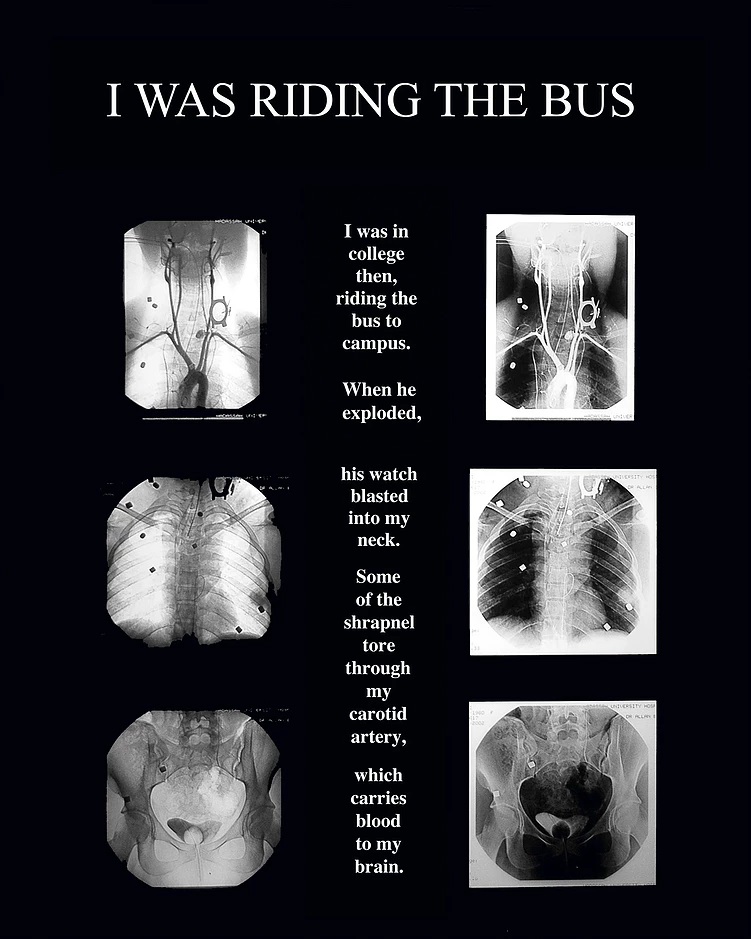A conversation with Diane Covert, an American Jewish photographer who documents genocide and terrorism
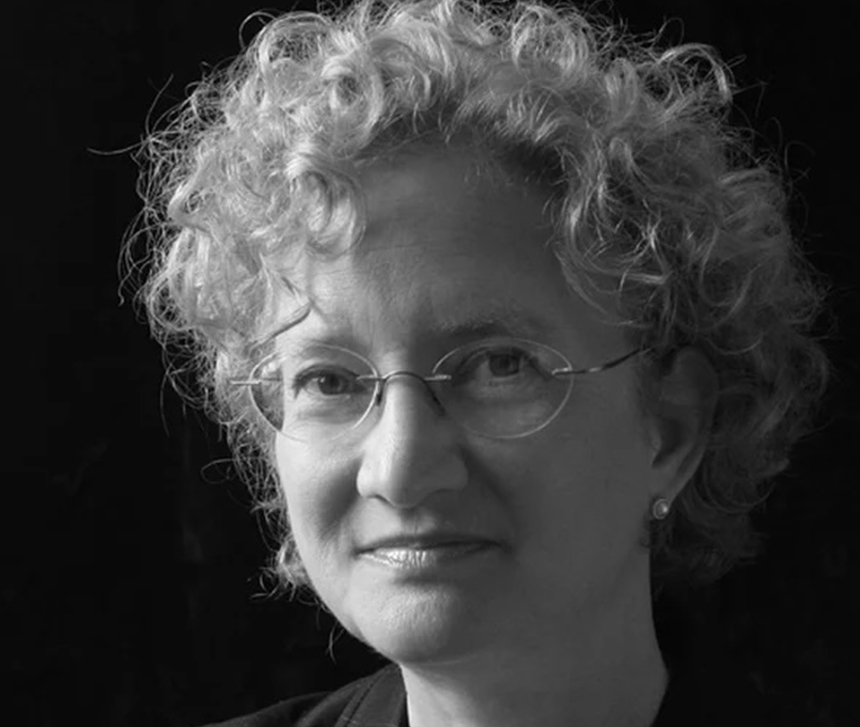
Diane Covert is a Boston-based photographer who uses her talent and love of the craft to bring attention to genocide and terrorism.
Diane’s work was brought to my attention by Allison Zivin at the Felshtin Society in New York. (Interview with the president of the Felshtin Society, Alan Bernstein, is here.)
The Felshtin society is an organization that is commemorating the pogroms of the early 20th century that took place in what is now modern-day Ukraine and other countries once occupied by the Russian, Austro-Hungarian, and Soviet empires.
As a photographer, Diane sheds new light, literally, on what happened during this time. One of her three websites, called ‘Why They Left’, documents why Jews fled Eastern Europe in droves during the first part of the 20th century.
She joins us now to tell us about her work and some of her fascinating discoveries in the world of photography going back a century in time, and on the other side of the planet.
[Editor’s note: This program originally aired last year.]
Pawlina: Welcome Diane for joining us!
Diane: Well thank you for having me. That was a nice intro!
Pawlina: Oh good! Well I hope it covered everything and piqued our listeners’ interest!
Diane: I’m sure you have.
Pawlina: So, first of all, tell us a little bit about yourself and how you came to be a photographer living in Boston.
Diane: Well I was just one of those kids who wanted to be an artist. I always wanted to be an artist, and it was when I went to art school—I was at Rhode Island School of Design and then later at Kansas City Art Institute—that I discovered that I loved photography. And I became a photographer. I switched from painting to photography and became extremely interested in the documentary photography movement that was so prominent at that time.
Pawlina: And so how did you get into documenting genocide and terrorism?
Diane: That happened a number of years later. I was driving my daughter to violin lessons as a teenager. It was February 2002. And I had NPR on, which is National Public Radio in the US. They had a program on called Palestinian Women and basically they were talking about the first suicide terror attack carried out by a woman. But they put it in this strange feminist context, and it was not my understanding of feminism. It was very disturbing. I wrote them a letter in February and received my answer in August, in which they acknowledged that it was not their best effort. But by then, I had decided that the world didn’t really understand this idea of suicide terrorism—that you put on a suicide vest and the human being becomes the bomb, actually.
And you can go up to a group of people—anywhere in the world, this can happen—for any reason. And there are always disputes. And people are always angry with each other about something. It moves around the planet, but there’s usually some dispute happening somewhere. And I didn’t think that in any way we should be tying that behavior to feminism, which I saw as certainly much more noble, or…. It’s certainly non-violent. So it made me decide that I wanted to teach people—or show people—via photography, about terrorism. Now that was an interesting problem because although there were photographs of buses and cafes that had been blown up, most people couldn’t tolerate looking at them. They were too anxiety provoking. Horrible.
So one day it popped into my head that I could use x-rays and CT scans. The doctors told me that—this is their word—that it’s sanitized. In other words, there’s no blood, and you can look at this and study it, and really understand the damage, without the anxiety which interferes with our ability to absorb it. Those are photographs—and I consider them straight photographs, but they are made with a different wavelength of light and they let us see inside of terrorism and also inside of the mind of the terrorists themselves.
Pawlina: Wow. So after that experience with NPR, you decided to go on a series of speaking tours?
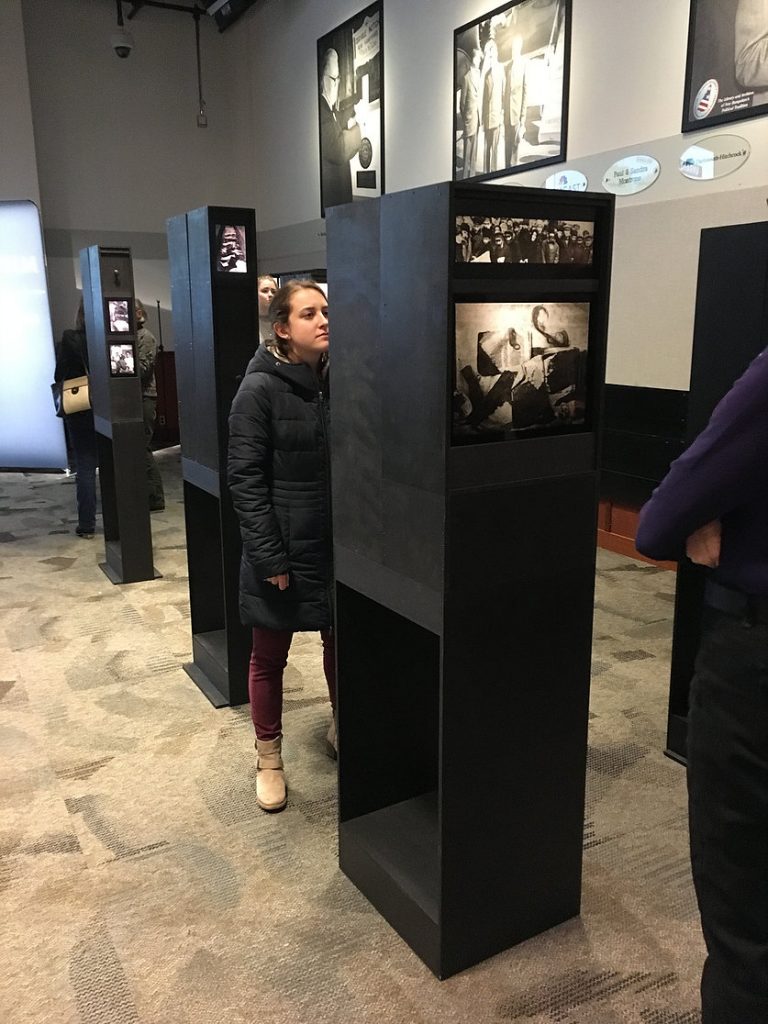
Diane: Right. I built a show…The last time I showed it was 2013 at a gallery in Virginia. I built that installation and started showing it in 2005, and it toured the United States. It went to Harvard, Stanford, UC Berkeley, to medical schools…it went all over the place. And my point was, more than just this was horrible…but that this is horrible, and this is very simple to do. Because when you look inside of these x-rays, you see nuts, bolts and screws; the bombs are made out of things that you can buy in a hardware store anywhere in the world.
And I wanted people to understand how easy it would be for this phenomenon of suicide terrorism to spread, no matter how you feel about Jewish people or how you feel about Israel. And there are disputes. People don’t agree or whatever, but the idea that this is a technique and almost always carried out by very young people who are too young. The adolescent brain is not mature enough to understand the permanence of death. It’s a terrible thing.
Pawlina: And you know the sad thing is that this really is nothing new. The technology is new, but over time, we’ve had this irrational hatred towards people that manifests in these acts of terror. And it happened during the Holocaust. It happened before the Holocaust, throughout time. And people just don’t seem … I don’t know, their brains don’t engage. I don’t know if their emotions take over or what it is. But you stop and think, this is another human being. Why would I want to inflict such harm? But yet, they did. And you know, 100 years ago—as I mentioned we were connected through the Felshtin Society, we were just speaking recently with Alan Bernstein of the Felshtin Society about their commemorations of the pogroms 100 years ago…which most people have only a vague awareness of, thanks to Fiddler on the Roof. Right?
Diane: Yes.
Pawlina: So you have a whole website devoted to documenting, through photographs, those pogroms. Tell us about that and how you got into that.
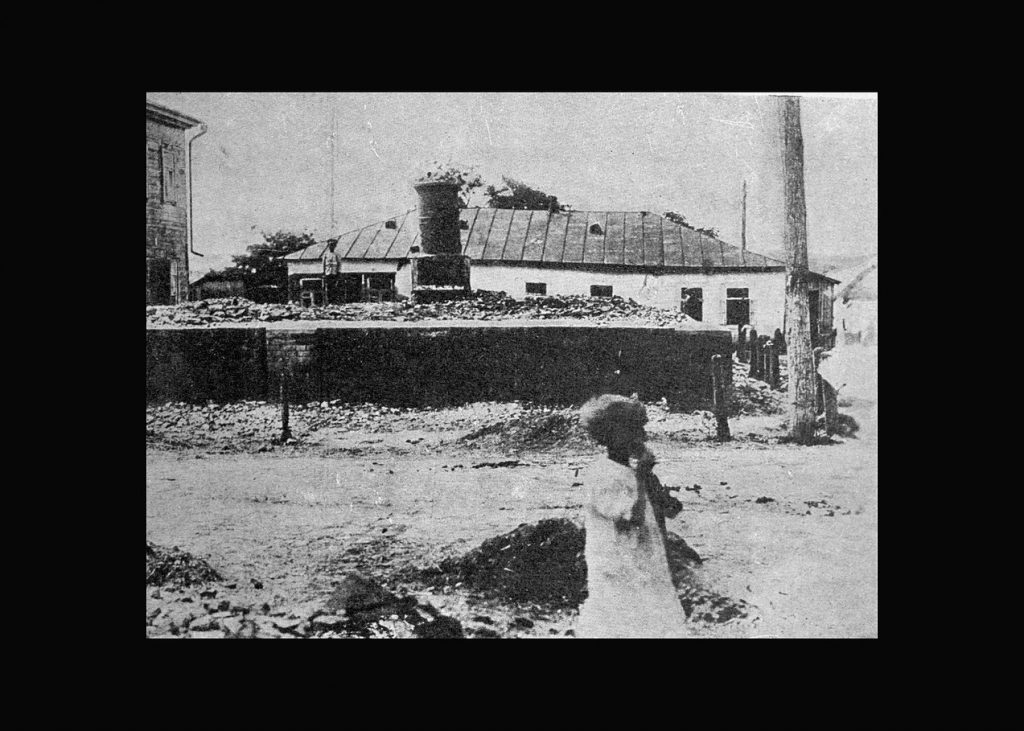
Diane: Well, as I worked on the x-ray project, I understood about myself that I was very interested in Jewish history and the history of antisemitism, specifically. And bringing visual evidence or saving visual documentation. So I moved the x-rays into the field of art in part to save them for future historians, for others to think about what we saw here. Because they were obviously created only to help people survive.
And my own background is—I grew up in a Jewish home. And all of my relatives—grandparents, and great aunts and uncles—one way or another, both sides came from families that left during the various waves of pogroms.
There were three big waves, I think. The first was that Fiddler on the Roof [late 1800s], and then there were some from 1903-1906. And then the biggest and most destructive wave was the Russian civil war pogroms. And I knew that I wanted to do something about the pogroms. I did not have a lot of information about them.
But I happened to cross a graduate student bulletin from Harvard (I live not too far from there), and there was a young man who was doing research into the Russian civil war…the Jewish Defense League or something. And I was able to contact him, and he showed me this book. It’s all in Russian, 178 photographs. It’s a very rare book. And I said, “This should be a photo show; they’re amazing pictures!”
It’s quite an in-depth archive of the pogroms specifically during the Russian civil war. And he told me that it had originally been a photo installation that in Moscow in 1923 they hung a show of photos and they had an exhibit of documentation around it. Which is bigger that the book. But it is a catalogue. And they only published 5000 of them in Moscow. They published them not until 1926. And then the people, the main person who compiled all the documentation was probably purged— he disappeared after 1937. So these photos exist in these catalogues, and I tried to see if the originals existed in archives in Ukraine. I had no luck with that. But I had the photos; I actually own my own copy. And I decided to bring them into the 21st century because how many of them survived. And then who is able to look at them. So the idea was to take them and literally pull them out of the grave, and present them again… for the purposes of scholarly research, education, and also families who want to know a little bit about their own past. Because they all came with Russian captions, I had them translated into English. So you can look at them and see either Russian or English, or see both.
Pawlina: Oh that’s fantastic. And that’s on your website called Why They Left.org?
Diane: WhyTheyLeft.org has a sampling of them. We have a non-profit called the Jewish Diaspora Cultural Foundation. And we are going to be building this site out to include all of that. My dream is to take not just these photographs—there are others—and build a very large searchable archive. So the photographs that I have we know the towns, because they told us the towns, the dates. You can cross-check them to known pogroms. You can see people—you can see children, farmers, doctors and other medical personnel. Perpetrators are in there — unfortunately a lot of scenes of destruction.
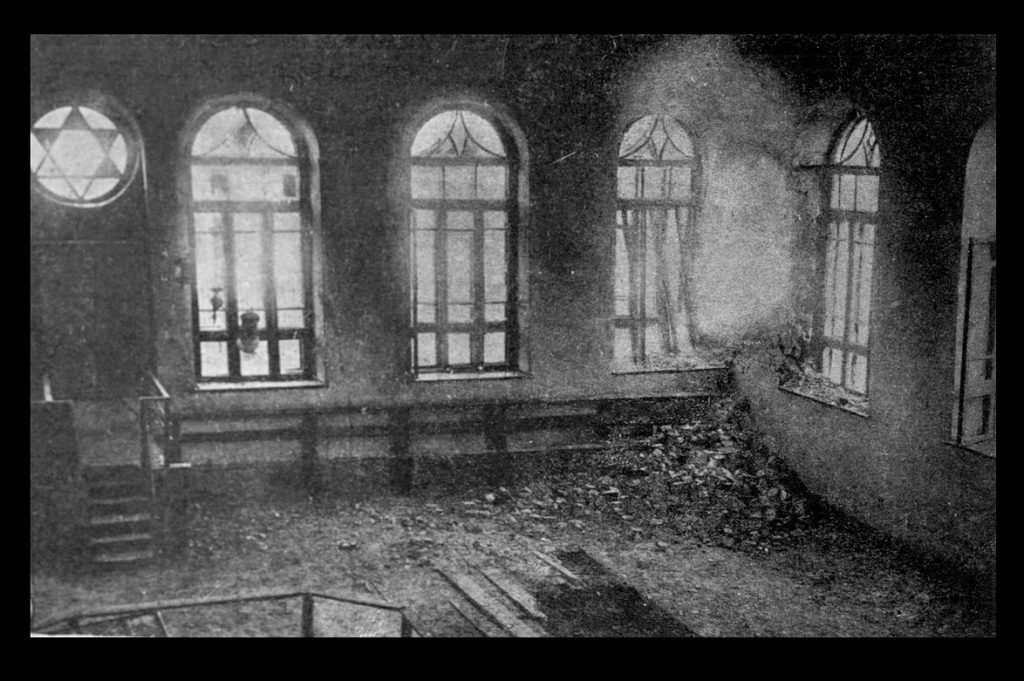
Pawlina: So these photographs—now we’re talking about something that happened a century ago—and there’s a really interesting story behind these photographs. Tell us how they came about.
Diane: So it was both professionals and ordinary people who made these. I call them dedicated amateurs because to be able to use a camera and film back then you needed to know more. Today we pick up our cell phone and if we see something extraordinary we shoot. But as a photographer, I can tell looking at this book that most of these pictures were definitely made by professionals. And we know that there were organizations—Ukrainian relief organizations and the Red Cross—had groups in what was called the Pale of Settlement or the area where the Jews mostly lived. And they were interviewing people, and in some cases documenting. I work with a Brandeis academic; her name is Dr. Irina Astashkevich. She’s from Russia, and together we are translating these documents. One of them is this volunteer firefighter who complained after a pogrom that his camera had been stolen. So this tells us that there were cameras all over the place.
But another one, it’s from The Report of Inspector I. Aronovich to the Central Section for the Aid of Pogrom Victims of the Department of the Aid of Victims of the Counter-Revolution of the People’s Commissariat of Social Provisions for the Ukrainian Soviet Socialist Republic about the Results of the Inspection of shtetl Volodarka, Skivra region of the Kiev province, August 11, 1919.
Pawlina: And that’s the title? That whole thing was the title?
Diane: That’s the title. Yes. But we find out, what he says at the beginning: “Part of the Volodarka refugees who came here in hope of finding anything of their property walked around the shtetl, rummaging in the ashes. I am hurt and saddened looked at exhausted people who were left naked and shoeless on the street, without any means of living, making the impression of orphans.”
And then he goes on later and says: “We wanted to go and photograph the demolished fortifications, for which purpose we brought a camera with us that we had purchased specifically for this purpose. Once we went out onto the street with the camera, we saw the people running in panic from everywhere towards Skvira.”
So what this means is that they didn’t have a photographer. Because I’m a photographer and I can tell you, we own cameras, and when we’re hired to do a job, we bring them with us. These people… there was a dedicated amateur, at least one who knew how to use a camera. And when he stepped out with his camera, what he saw was an ongoing pogrom. Because they were running in panic.
“We saw people running in panic from everywhere toward Skvira.” And then later he goes on and says: “We began to photograph and made six pictures of different parts of the shtetl.”
And that number six fascinated me. Because with a very large professional camera, you probably couldn’t do six. But, with smaller cameras, you could. And I had already started investigating …did they have consumer-level cameras in the area, did they have film. From both the Library of Congress and the George Eastman House Museum, I know that the answer is yes. And I talked to specialists in both of those institutions. One gentleman is a technical specialist historian and I said to him, “In 1920 how long was roll film?” And he said, “Either six frames or eight frames.” So this I believe is why they took six pictures.
Pawlina: Oh I see.
Diane: Six frames. But there’s a lot of documentation in the form of old magazines, and Kodak told me where their representatives were located, where their offices were. It includes Odesa, for example, during the Russian civil war period. So individuals owned cameras and knew how to process film. And when these investigators came, they asked for first-person interviews. It’s not difficult to believe that some of those people also were able to say: “And this is a picture that I took.” To me, this is fascinating because it’s the same thing we do today when we see something extraordinary. It can be extraordinarily beautiful, or surprising, or horrific. It could be something that happened in war-torn Syria; was there not a little kid who uploaded pictures, and it went all through the internet? This is the beginnings of the ability to do that.
Pawlina: What a look back in time to see the start of where we are now! So if people want to find out more about the pogroms themselves… a picture is worth a thousand words, right?
Diane: At this point, you go to Why They Left.org because it’s about why people left and came to the US or Canada. But if you wish to contribute to helping us build out a large searchable archive that scholars all over the world and students and families will be able to use, you can either go to the Jewish Diaspora Foundation.org or if you just mail it to Jewish Diaspora Cultural Foundation (JDCF), 17 Holt Street, Belmont, Massachusetts 02478 and I will send you the paperwork. So if you are in the US, it’s a 501c3 tax-deferred organization, and you get the full tax break for doing that. If you’re interested.
Pawlina: So tell me more about what’s going to be the content on this website that you’re working on. And you said you’re working on redoing the book?
Diane: The original idea that we had was to actually republish the book in English. I’ve had it translated, believe it or not, four times. The issue as I spoke with more and more specialists in Russian history and history of the Russian civil war, Ukrainian history, I came to understand that the issue is that the photographs are very accurate and very important, but the documents, because they were not collected until 1923, had this very heavy soviet bias.
There’s a lot of language about comrade this and comrade that, and a lot of anger expressed towards the merchant class, or kulaks, or the middle class, or wealthy people. So instead of dividing people between Jewish people and let’s say Russian Orthodox or Catholic Christian people, they divided people according to whether they were working class in their mind—the proletariat, or the bourgeoisie. And that isn’t accurate to what the experience of the Jewish people who were caught up in the pogroms in that old Pale of Settlement felt and lived through. So the academic that I’m working with is, Dr. Irina Astashkevich at Brandeis, is working with an older set of first-person accounts from 1919-1920. We’re translating those, and our final will be a combination of photographs and first-person accounts that happened during the time of the pogroms.
So that people get a realistic understanding of what the population experienced. And by the way, in those you often find Ukrainian people in those areas helping hide the Jewish people. So it’s not a story of just one group against another group. It’s very specific, malicious armies that came in and carried out these activities. And there were these criminal bandit gangs that were involved, but a lot of people…in fact I’ve had conversations with friends, and many of them will tell stories that their grandma told them, that they were hidden as little children by such and such neighbours. That happened.
Pawlina: Yes.
Diane: If it hadn’t, we wouldn’t all be here.
Pawlina: So the original was great as a research source but what you’re going to be doing is something more informative for modern audiences; stripped out the Soviet propaganda (that was anachronistic, actually) and so we’ll get something a little more real. Again, tell us where we’ll be able to find that at some point.
Diane: The book we’re working on and the website, I will notify you when I have all 178 images prepared and translated. But they are not posted on the website yet.
Pawlina: So that’s why people need to donate
Diane: I need specialists, computer science specialists. And I also need researchers to help us dig up more of these images. I’m very interested in visual archives because this is pre-Photoshop. So what you see is what you get.
Pawlina: Right.
Diane: I want good sources of first-person documents, where people are describing what they went through. And that will be able to be compared to what people are going through today in different parts of the world. I think it will be a really useful tool for researchers moving forward, in ways that I can imagine but also in ways that we can’t imagine yet.
Pawlina: So it takes you beyond Fiddler on the Roof, the story behind the story. It wasn’t just a bunch of dancing vandals that crashed a wedding party. It’s good that [movie] brought attention to the fact that they [pogroms] existed, but to me, it was just a fascinating bit of cultural history. And as a Ukrainian person, I knew that there were Jewish people there, and they were just—they were there.
Diane: Right.
Pawlina: And you know, Ukrainians and Jews have co-existed—sometimes peacefully, sometimes not—but successfully, I would say, for centuries. Except for the times, and until the times, that outside forces came in and stirred up trouble between us.
Diane: Well you know there is a lot of truth to what you’re saying there, because even the Fiddler on the Roof era pogroms, and then that second wave that I mentioned, were nowhere near as violent or as devastating. This third wave during the Russian civil war—and you would know better than I what the Ukrainians suffered as a result. That is when things really, really… intensified, and became much, much worse. And historians have told me (I’m not a historian, but I have worked with them), that most people think that in the east, the Holocaust was really almost modelled on what was going on in the pogrom period. Not the death camps and all that, but these big pits and the way the Holocaust was carried out in Russia, Ukraine and the east. So it’s a very important period, and it did transition, unfortunately, into the Holocaust.
Pawlina: Yes, and so here we are, back full circle, to the work that started you on this. It knows no boundaries. It’s universal, I guess… it just carries on, and I think that people need to look within themselves. It is so easy to become one of them if you’re not careful, isn’t it?
Diane: Right. Well I suppose what happens is minority groups under times of stress are very, very vulnerable. It’s not my expertise; this is pure speculation … but you see it in a lot of the world. That’s part of why this work is important, because it sheds light on genocide in other parts of the world. And it’s not necessarily the very first photo archive, because the Armenian genocide was a few years earlier. But because there was so much concentration of cameras and photographers, and specialists in interviewing people and recording it, it’s a very deep, broad archive of information. And it reminds of what goes on in places like even Syria today, or other parts of the world. So I think it needs to be studied. I actually think that the things that I would see in it, or even today’s historians see in it, may not be the things that people see in it in the future. There may be deeper understanding as people study it. That’s another reason why I’d like to preserve it. For example, there was always germs or something going on, before we had microscopes. But then we looked in the microscope and said: “Wow, that’s interesting!” I think there may be some kind of information that’s buried in these images that scholars with fresh eyes will see in the future, that we don’t necessarily see today.
Pawlina: This is a way of looking forward by looking into the past and understanding the root cause… well, maybe not the root cause, but to understand that this is not new and has been going on…and that maybe there is a way that we can stop or at least reduce it.
Diane: And that’s another really big piece. I wouldn’t show most of these images to middle school children and certainly not elementary school children. But high school teachers can use some of this. And college professors can use some of this in classes around differences, either political or racial or religious differences, or differences in ability. And help people understand that hatred can really spin out of control and it has very far-ranging consequences. This is not a bad thing necessarily, but three-quarters of the Jewish people who live in the United States today are, we think, descendants from people whose (like myself) grandparents, great-grandparents, whatever (in my case, grandparents) … entire families left. My grandparents were children, and my great-grandparents said: “We have to leave.” My grandfather was a baby, and his parents had lost two children in a previous pogrom, and so they left.
Pawlina: Children!
Diane: Yes. So people leave. I’m sure it changed things in Ukraine, and it changed things in the United States. For the better or not for, the better, that’s not for me to speculate. But these things have very, very far-ranging consequences. And we see it today, within the past few years, with panicked people escaping war-torn areas.
Pawlina: Yes. So to get a look back into this period of time, a century ago in photographs, tell us again, Diane, where to find your work online.
Diane: Okay. WhyTheyLeft.org has, at this point, not most of the images, just a handful of the images. JewishDiasporaFoundation.org will soon have links to many more of them. I have already had 178 images translated, and they will be available for people soon.
Pawlina: So for people to find out more about the pogroms, about your work, the photographs [go to] whytheyleft.org. And as well a broader range of work at jewishdiasporafoundation.org where people can make a donation as well. Awesome. Thank you so much Diane!
Diane: Thank you Pawlina!
Diane Covert’s three websites are:
The X-Ray Project
Why They Left
Jewish Diaspora Cultural Foundation
Listen to the program here.
Ukrainian Jewish Heritage is brought to you by the Ukrainian Jewish Encounter (UJE), a privately funded multinational organization whose goal is to promote mutual understanding between Ukrainians and Jews. Transcripts and audio files of this and earlier broadcasts of Ukrainian Jewish Heritage are available at the UJE website and the Nash Holos website.
NOTE: UJE does not necessarily endorse opinions expressed in articles and other materials published on its website and social media pages. Such materials are posted to promote discussion related to Ukrainian-Jewish interactions and relations. The website and social media pages will be places of information that reflect varied viewpoints.







